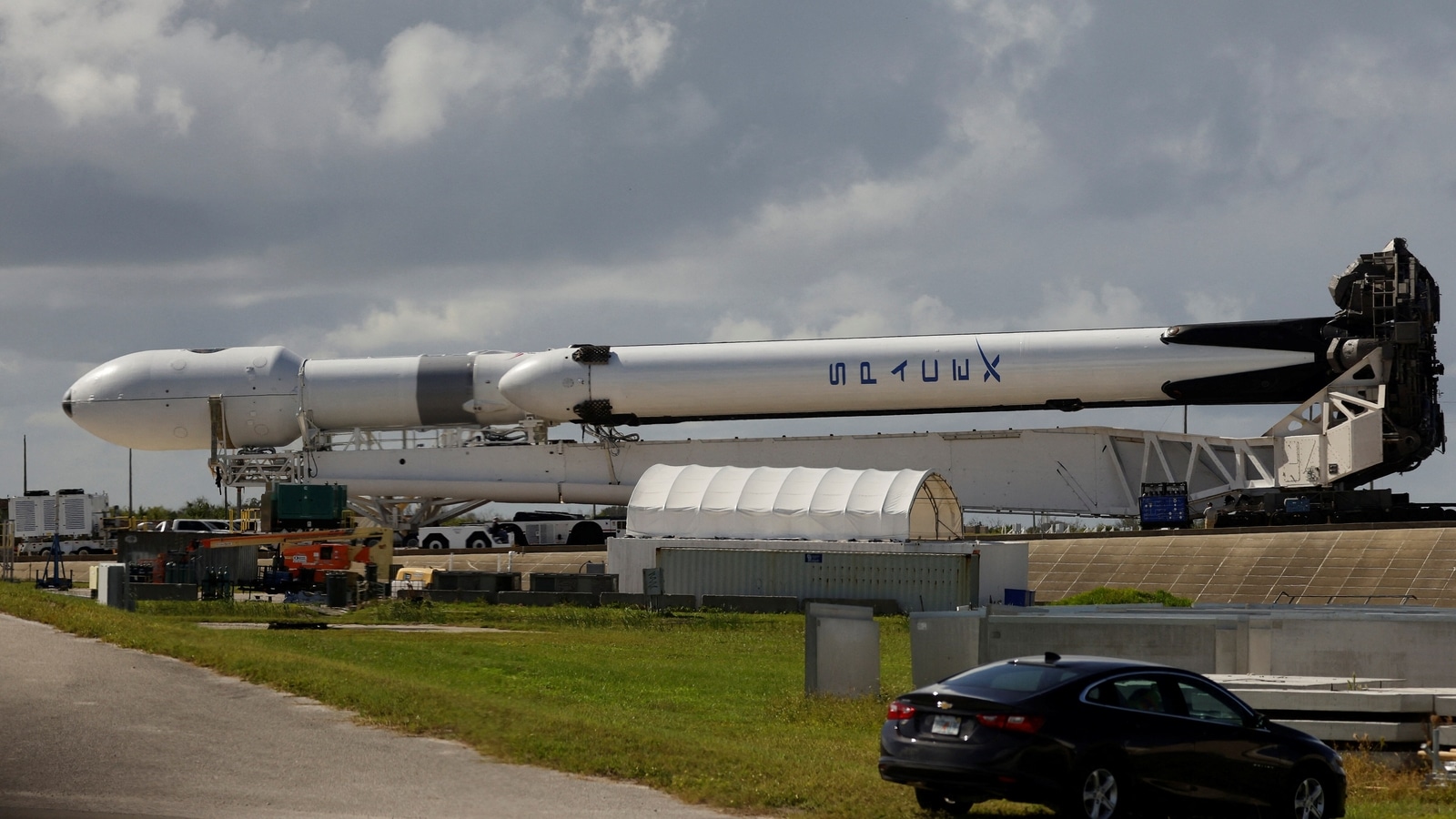SpaceX Set to Launch Falcon Heavy on Classified US Space Force Mission
The big rocket is back after a 40-month hiatus but with far fewer customers than the popular Falcon 9.

SpaceX is set to launch its powerful Falcon Heavy rocket from Florida on a classified mission for the US Space Force, marking the return of the rocket after a more than 3-year hiatus. The launch is scheduled for as early as 9:41 am local time on Tuesday. The flight will be just the fourth launch of the Falcon Heavy since its debut in February 2018, a relatively infrequent launch cadence for a vehicle that has been hailed as the most powerful rocket now in operation.
When Elon Musk, chief executive officer of Space Exploration Technologies Corp., first announced plans to create the rocket in 2011, it was touted as a new and powerful option for customers in need of launching large satellites. The big rocket has roughly a dozen launches planned over the next several years, with the majority of flights designated for the Defense Department and NASA's science missions.
But the Falcon Heavy has failed to live up to its commercial promise as a can-do rocket in the same way that the Falcon 9 has. It accounts for a tiny fraction of SpaceX's launches, while the workhorse Falcon 9 handles most of the company's business. The low launch frequency of the Falcon Heavy speaks to the current market for satellite launches, as well as changes to SpaceX's strategy for the marketplace. The company has vastly upgraded its Falcon 9 rocket over the last decade, making it a more powerful rocket. And as SpaceX focuses on its very large interplanetary rocket, Starship, for more ambitious deep space missions, there appears less need for the Falcon Heavy.
Said Caleb Henry, a senior analyst with the research and advisory firm Quilty Analytics: “The Falcon Heavy is being squeezed on both ends—on one end, by the Falcon 9, which has taken a lot of its responsibility, and on the other end, by Starship, which may take Falcon Heavy's future responsibilities.”
The Falcon 9 has turned out to be suitable for much of the commercial satellite market, especially as the rocket's capabilities have grown. Prior to 2016, SpaceX listed the Falcon 9 as capable of launching 29,000 pounds to low-Earth orbit. Thanks to various upgrades, the Falcon 9 can now get more than 50,000 pounds to low-Earth orbit.
While the Falcon Heavy can still loft a lot more than that — more than 140,000 pounds to low-Earth orbit — its nose cone is still the same size as that of the Falcon 9, limiting the satellites it can carry. “It's launching payloads that have more mass, but it can't accommodate something with a significantly greater volume,” said Carissa Christensen, CEO of BryceTech, a spaceflight analytics firm. “So there are only certain payloads that really need a Heavy rather than the 9.”
With much of the commercial satellite market satisfied by the Falcon 9, that really only leaves the biggest payloads bound for distant orbits for the Falcon Heavy. It's a small pool composed of mostly national security satellites from the Department of Defense, scientific payloads from NASA, and just a handful of the largest commercial satellites from customers like Viasat Inc. and EchoStar Corp.
One advantage that the Falcon Heavy still has over the Falcon 9 is that it can send larger satellites directly into geostationary orbit, a path 22,000 miles up that's been popular for telecommunications. The Falcon 9 can get satellites into this orbit, too, but typically the rocket must lift the satellites into a lower transfer orbit first. From there, the satellites raise themselves to the higher orbit. That process takes time, often months, which delays companies from using their satellites right away.
“What we've seen is that the [geostationary] market has dried up,” Henry said. “And then on top of that, a surprising number of customers are willing to wait and actually allow their spacecraft to do that orbit raising over several months.”
The Falcon 9 is also SpaceX's rocket of choice for launching the company's own internet-from-space Starlink satellites into low-Earth orbit. It's likely due to the rocket's nimbleness. The Falcon 9 has the capability to take off from multiple sites in Florida and California, whereas the Falcon Heavy can only launch from one SpaceX site at the moment. And the Falcon 9 has a significantly reduced turnaround time, making it easier to launch more satellites in a given year. “There's a stronger business case for the Falcon 9,” Henry said.
Many of the more ambitious uses touted by SpaceX for the Falcon Heavy, such as flying passengers to deep space destinations like the Moon, are no longer planned for the rocket. Such trips are now reserved for SpaceX's Starship rocket, which is tasked with landing people on the Moon for NASA. For missions closer to home, the Falcon 9 continues to shuttle people back and forth to the International Space Station in low-Earth orbit.
Still, despite the challenges, it's too early to write off the Falcon Heavy. It takes years for satellite manufacturers to develop new spacecraft, so it's possible that more vehicles will come online soon that need the Falcon Heavy's abilities. “You may have a vehicle with more capacity, and it takes a little while for payloads to catch up,” Christensen said.
Catch all the Latest Tech News, Mobile News, Laptop News, Gaming news, Wearables News , How To News, also keep up with us on Whatsapp channel,Twitter, Facebook, Google News, and Instagram. For our latest videos, subscribe to our YouTube channel.






























